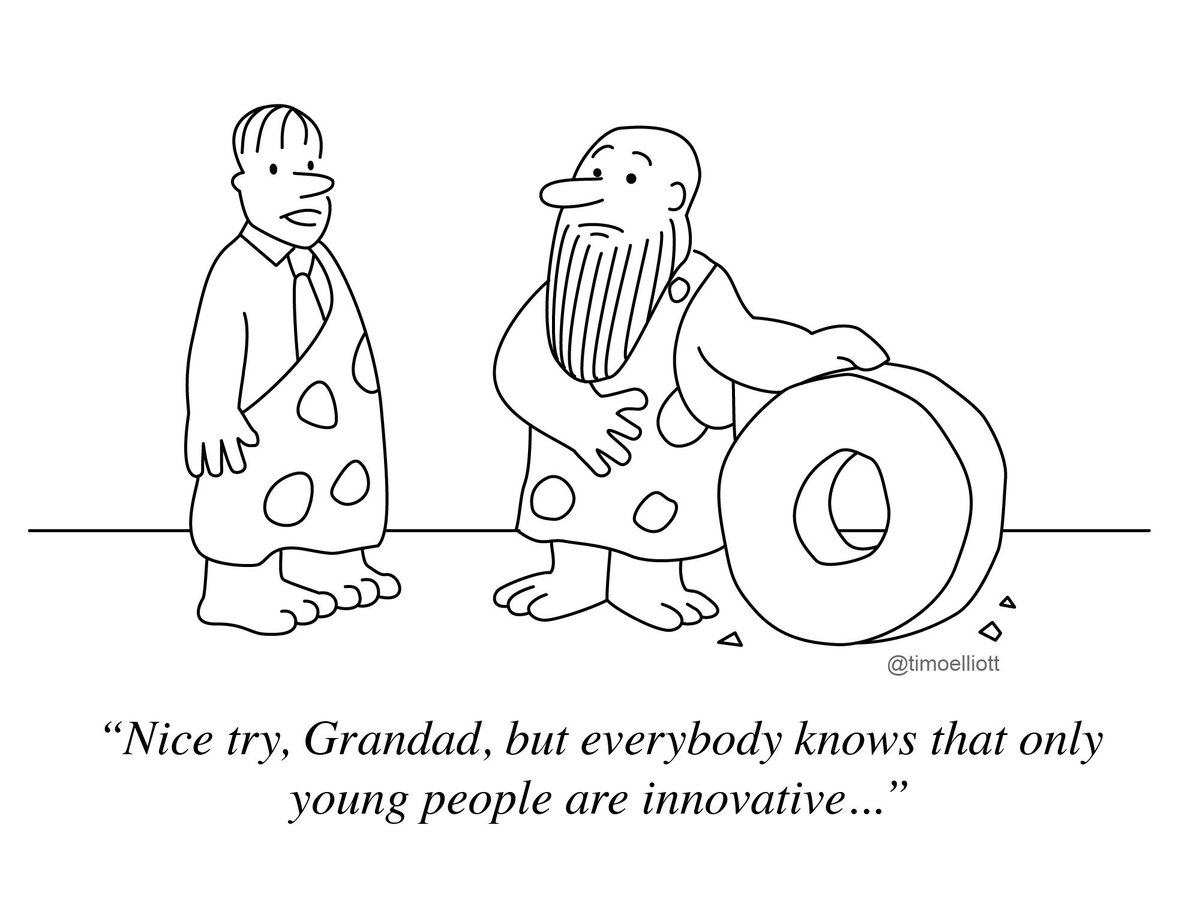In recent years, oncologist Philip Salem, MD, has done some of the best work of his career. Using new combinations of existing cancer therapies—personalized immunotherapy, chemotherapy and targeted therapy—he’s getting remarkable results for patients with advanced lung, pancreatic and other cancers, many of whom were out of options. In August, he presented a research poster on his innovative approach at the American Society of Clinical Oncologists (ASCO) Breakthrough meeting in Japan.
All of which is impressive, but even more so considering that Salem, the director emeritus of cancer research at St. Luke’s Episcopal Hospital in Houston, is 83 years old. He has no plans to retire.
“I don’t come to work because it’s an obligation … or because I want to make more money,” he said. “I come to work because I love what I do.”
Salem’s example is significant at a time when the capacities of older people have been questioned in public debate. The 2024 presidential election has focused on age more than any other. Joe Biden, the oldest person to serve in office, ultimately bowed out due to concerns related to his age. Now, Donald Trump, 78, is the oldest presidential nominee in US history.
The debates surrounding the candidates’ ages have exposed ageist stereotypes, as well as legitimate questions about how age affects a person’s stamina, judgment and abilities. But there’s little attention on the many people who have accomplished great things in their 60s, 70s, 80s—and beyond.
“There are plenty of models from yesterday—and more and more each day—who came into their own at the stage of life when society would have had them packing it in,” writes Mo Rocca in his new book, Roctogenarians: Late in Life Debuts, Comebacks, and Triumphs (2024, co-author Jonathan Greenberg).
Mary Robertson Moses was 78 when she took up painting and became famous as Grandma Moses.
The book profiles people like author Laura Ingalls Wilder, who published her first book at 65; architect Frank Lloyd Wright, who designed the Guggenheim Museum in his late 80s; and Diana Nyad, who swam from Cuba to Florida at 64.
“One thing everyone in this book has in common: a belief that late life is no time to surrender,” he wrote.
That unwillingness to surrender led some artists, authors and innovators to do their best work in their later years.
- Michelangelo was 72 when he was appointed architect of St. Peter’s Basilica in Rome. He continued in the commission until his death at age 88 and designed the dome that many consider the greatest creation of the Renaissance period.
- Mary Robertson Moses took up painting at 78 and became famous in her 80s—so famous that a Life magazine cover story celebrated the 100th birthday of “Grandma Moses” in 1960.
- Martha Graham continued to dance until 75 and choreographed her last work at 96.
- Helen Keller was 75 when she published her book, Teacher, which honored Annie Sullivan.
- Pianist Arthur Rubinstein continued to perform until age 88.
- William Shatner, who played Captain Kirk in the original Star Trek TV series, blasted into space at age 90 in 2021 aboard a spaceship built by Jeff Bezos’ Blue Origin company. His record was broken in 2024 when Ed Dwight, 90, a retired Air Force pilot, became the first Black astronaut and oldest to go into space.
What spurs some to continue to achieve when their peers are retiring? Later-in-life standouts cite a passion and sense of purpose in their work, adaptability and a forward-looking outlook, as well as factors like luck, good health and the right opportunity.
Still Creating
Actress June Squibb has had a lifelong career in theater, but it wasn’t until age 60 that she began working in film. At 84, she was nominated for her first Academy Award for a supporting role in the film Nebraska. This year, at 94, she played her first lead role in Thelma.
Choreographer and dancer Jawole Willa Jo Zollar began dancing in her 20s and founded a performance ensemble, Urban Bush Women, 40 years ago. She was 71 when she received a MacArthur “genius grant” in 2021. She created a piece called “Scat! … The Complex Lives of Al & Dot, Dot & Al Zollar,” which is loosely based on the experiences of her parents and tells the story of the Great Migration, when many Black Southerners moved north or west.
Zollar attributes her creative longevity to good health, her passion for her art and a combination of the right circumstances. She feels more grounded now that she’s older. When she first considered forming a dance company, she worried about whether it could succeed. As she matured, she became less attached to outcomes and more focused on the work itself.
“I realized that, maybe this wasn’t going to be a company like Alvin Ailey,” she said. “Maybe it was just doing the work and living inside the joy of that, and that was OK.”
Perspective, acquired over seven-plus decades of life, also keeps Zollar grounded.
“Things that used to completely disrupt my emotional life, now I can say, ‘OK, we can get through that,’” she said. “Aging gives you more tools, more life skills. You become wiser.”
70 Over Seventy
Many cities highlight younger achievers, with lists of up-and-coming leaders like “Thirty Under 30” and “Forty Under 40.” But since 2017, the Hannan Center, an agency in Detroit serving older adults, has taken a different approach. Its annual 70 Over Seventy Next Chapter awards honor “human potential that continues and, in many cases, increases with age.”
The 2023 event’s program book reveals the vast potential of older adults to contribute and serve. Recipients include “unsung heroes” and long-time local volunteers, as well as artists, entrepreneurs and community leaders around the state of Michigan.
“All of our awardees are doers,” said Vincent Tilford, Hannan Center CEO. “They’re curious and they’re resilient. But what stands out for me is that they all have a purpose, and that’s often connected to bringing service to others.”
As examples, he cites recipients like Glenda Price, the first Black president of Marygrove College in Detroit, who retired and became president of the nonprofit Detroit Public Schools Foundation; and Nettie Seabrook, the first Black executive female at General Motors, who went on to become chief operating officer of the city of Detroit, and later, COO of the Detroit Institute of Arts.
“After retiring, they found new purpose in serving the needs of the community,” he said.
Breaking Barriers
When Ed Hajim became the chair of the University of Rochester’s board of trustees at the age of 72, the university had to change its bylaws. Previously, the board’s age limit was 70.
Hajim donated $30 million—the largest single donation in its history—to support scholarships and to endow the School of Engineering and Applied Sciences. Philanthropy, however, was Hajim’s second career. His first was on Wall Street, where he held senior management positions with the Capital Group, E.F. Hutton, and Lehman Brothers, and later was chairman and CEO of Furman Selz.
Now, at 88, Hajim is fully engrossed in a third career. He’s the author of a memoir, On the Road Less Traveled: An Unlikely Journey from the Orphanage to the Boardroom (2021) and a fable offering life guidance, called The Island of the Four P’s (2023).
What keeps Hajim going? He credits his ability to pivot, learn new skills and reinvent himself. Working in finance, he relied on left-brained thinking skills and hated to write. Spurred by the desire to share his life story in books, he learned to love writing. Similarly, as a Wall Street executive, he stayed steadfastly out of the press.
“The thinking was, ‘Don’t be on television. Don’t make public statements. Just run your company,’” he said. “Now that I’m selling books, it’s the opposite.” He’s fielding media interviews and, with the help of his publicist, maintains an online presence on his website, Facebook and Instagram. Soon, he hopes to break into TikTok.
Hajim also credits a lifelong habit of looking forward. At the end of each year, he sets aside quiet time to think about the year ahead.
That’s a common theme echoed by many late-in-life achievers.
“Always have something to look forward to,” wrote Carroll Spinney in an essay published in an anthology, 80 Things to Do When You Turn 80 (2017).
Spinney played Big Bird and Oscar the Grouch on Sesame Street from 1969 well into his 80s. He and his wife loved to travel and always had a journey on the horizon. After Spinney suffered a nasty fall, traveling required bringing along a cane and a folding wheelchair. That didn’t slow them down.
“Looking forward to something, whether it be a trip somewhere or a visit to the people I care about, is what gets me excited about life,” he wrote. He died in 2019.
The Intangibles
In addition to a sense of purpose, late-in-life achievers also identified intangibles that keep them engaged and motivated. Many cited strong social ties: a supportive spouse, long-term collaborators or valued colleagues. When Salem attends medical conferences, he always makes plans for a dinner with the many fellow oncologists who’ve become friends over the years.
Attitudes toward aging are also key. Salem thinks his work has given him a unique take on getting older.
“I think aging is a privilege,” he said. “As a cancer doctor for 56 years, I’ve seen so many people dying when they’re young, in their 20s, 30s and 40s.”
Hajim thinks his positive mentality keeps him engaged. He tries not to think too much about his age. That’s not always easy—at a recent Harvard Business School reunion, he learned that many of his classmates have died. But that also keeps him grateful for his good health and motivated to use the time he has.
Zollar credits a sense of curiosity and wonder, cultivated since childhood. She spoke with emotion as she described recent experiences: a performance of Cabaret on Broadway; a spirit-lifting visit to the Brooklyn Botanic Garden; witnessing the solar eclipse in April.
“The totality was a spiritual experience,” she said. “It’s the beauty of something that is transcendent. This is an amazing, mysterious thing, that we live on this planet and in this universe. There is so much to be in awe of, so much that strikes wonder.”

Freelance writer Mary Jacobs lives in Plano, TX, and covers health and fitness, spirituality, and issues relating to older adults. She writes for the Dallas Morning News, the Senior Voice, Religion News Service and other publications; her work has been honored by the Religion Communicators Council, the Associated Church Press and the American Association of Orthopaedic Surgeons. Visit www.MaryJacobs.com for more.



